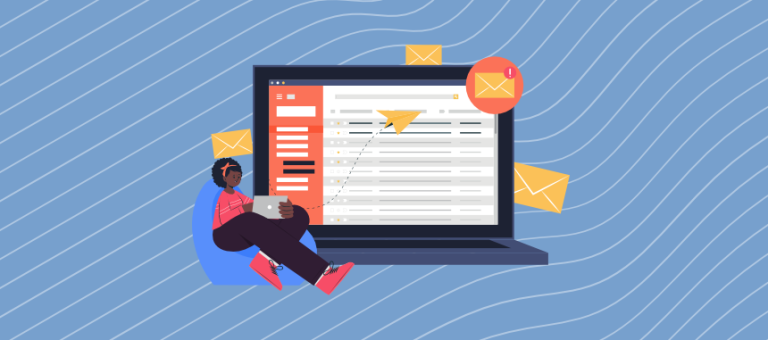It’s no secret that customer feedback is one of the most powerful tools for marketers and business owners in developing their strategies.
Because of this, we’re all in constant competition to catch our customers’ attention and get the data we need to inform action.
The accessibility of online survey tools has expanded the methods by which surveys can be shared and increased the potential for a wider array of data to be collected.
But the rise in popularity of online surveys has also led to fatigue in survey audiences, which has meant lower response rates for many of us trying to conduct research and collect feedback.
In light of this, knowing how to get people to participate in a survey is more valuable than ever.
What is the average survey response rate?
It’s widely accepted that the average survey response rate lies in the region of 33%, when considering the effectiveness of all the different methods of distribution.
Of course, the average can depend on the type of survey you’re conducting. For example, Genroe found that NPS surveys have an average response rate of 20%.
So, before you start collecting data, it’d be best to take a look into the average response rate for the type of survey you’re conducting.
This will help you manage expectations and set goals that are specific and achievable for your research.
What is a good survey response rate?
Anything above the average response rate should be considered a success, whereas anything above 50% would be considered excellent.
But those numbers should be taken with a grain of salt. Turning data into action requires you to make generalizations drawn from patterns and trends in your data. The smaller your survey audience is, the less representative those generalizations are of your actual audience.
This means that even if your response rate is 100% for a survey of 20 people but you have 2000 customers, the findings of the survey should not be generalized to your entire customer base.
That doesn’t mean that you should send blanket surveys to your entire audience. But rather, the audience you conduct a survey with should be a representative sample of your entire audience.
There’s more thought that should go into collecting feedback than achieving a high response rate. Don’t get us wrong, it’s important, but it’s not the be-all and end-all.
How to calculate survey response rate
Survey response rates can be calculated by the number of responses divided by the number of invitations multiplied by 100.
(Responses ÷ Invitations) x 100 = Survey Response Rate.
For example, if you sent out 200 survey invitations and received 78 responses, your response rate would be 39%.
Try it yourself with our survey response rate calculator.
How to increase survey response rates
As we mentioned above, you’re in constant competition with other businesses when it comes to collecting customer feedback.
I mean, how likely is it that your’s is the only request for feedback a customer has received that day? Not very likely.
But there are ways you can stand out from the crowd and maximize your survey response rate. Take a look at these 10 tips for increasing your survey response rates.
1. Manage respondent expectations
One of the best ways to encourage responses is to state the number of survey questions up top and approximately how long it will take to complete the survey.
Doing so allows you to manage expectations and stave off that natural frustration that occurs when completing a survey, as respondents will have a clear end goal in their minds.
It’s important that you’re truthful here. If customers feel that you’ve lied to them, you’re going to burn bridges and pretty much ensure that they won’t respond to any future surveys.
2. Make them feel wanted
In the same vein as the previous tip, you can also start by explaining what data you’re collecting and why. People are more likely to respond to a survey if they know they’ll be contributing to something important or if their feedback will have a direct impact on their lives.
A strong example of this can be seen in employee engagement surveys, where feedback is collected with the goal of changing work cultures or environments to improve the day-to-day for employees. These surveys are so successful because a clear line can be drawn between giving feedback and effecting change.
This should be no different for customer satisfaction surveys (where the same line can be drawn) or even for academic surveys (where data is collected to inform important research).
3. Offer incentives
Offering an incentive to customers who complete your survey is a surefire way to improve your survey response rates. Whether it’s a discount on their next purchases or entry into a prize draw, you’re guaranteed to see an increase.
However, we’re always wary of encouraging quid pro quo strategies when collecting survey responses. It’s not that they’re not effective (because they are), it’s more a concern for the quality of results that are collected when doing so.
When you have a more controlled audience (such as a list of customers), incentives can encourage retention and strengthen relationships. But when distributing to wider audiences (such as via social media) where there are more unknowns, you may find people responding just for a chance to claim a prize.
We don’t mean to imply that offering an incentive is a bad strategy, merely that you should factor this in when analyzing survey results.
4. Keep survey short and relevant to the target audience
This is an important tip for any survey. Don’t ask more questions than is necessary to meet your goals and don’t take up too much time. There is a direct correlation between the number of questions asked and the response rate for that survey.
On average, there’s a 17% drop in responses for surveys with more than 12 questions and that takes more than 5 minutes to complete.
The more questions you ask, the more disengaged survey respondents will become (this is known as survey fatigue). This will either lead to more dropouts (meaning a lower completion rate) or respondents will rush through surveys without thinking about their answers. The latter is known as ‘satisficing’, a common form of response bias in poorly designed surveys.
5. Limit the number of open-ended questions
We won’t deny that open-ended questions are essential to providing context to quantified data. However, there is a limit to how much respondents are willing to give you.
If they’re asked to write a full explanation for every close-ended question they’ve answered, they’ll go mad before they finish your survey.
Save these question types for the most important data points in your survey and give your respondents some breathing room.
6. Choose the right distribution method for your audience and research
We’ve alluded to this in a prior tip, but we wanted to really cement this in. Choosing how you share your survey is as important to data quality as the questions you ask.
Creating a highly targeted customer survey then sharing it on social media makes very little sense, as your respondents aren’t guaranteed to be customers.
But that isn’t to say you can’t use multiple distribution methods for the same survey, in fact, this is something we encourage when they marry well together.
For example, a transport survey can be distributed in the following ways:
- By email to all newsletter subscribers
- As a QR code at travel access points (such as train or bus stations)
- Embedded on the website of the transport provider
- As a pop-up when service users connect to complimentary WiFi onboard
- Purchasing a survey audience that meets the criteria for the form and location of travel
7. Send surveys at the right time
Following on from how you share your survey, you also need to consider when you share them. This will be more obvious for some than others. For example, Net Promoter Score surveys can be shared after a purchase or customer interaction and event feedback surveys can be sent following the end of the event.
But more general surveys that aren’t linked to a specific action can see a lower response rate if they aren’t sent at the right time.
Research has found that the peak times for survey responses were between 10 am and 2 pm on Thursdays and Fridays. Now whether this is linked to a decrease in productivity at the tail-end of the week is up for debate, but it’s certainly something you can capitalize on.
8. Don’t fatigue your audience
Since data-driven marketing strategies have become the driving force for many modern businesses, it can be tempting to conduct surveys as often as possible. But this is a mistake too many people make.
Sending too many surveys can lead to response fatigue, which is where customers (or any type of respondents) receive too many requests for feedback over an extended period of time and become reluctant to participate.
This is especially damaging as you have no way to mitigate response fatigue once it’s taken effect. The best thing to do is spread out your surveys across the year or allocate specific questions to touchpoints in the customer journey.
9. Create visually appealing surveys
Too often the visual design of a survey is overlooked. Whether it’s considered unnecessary or there’s a lack of customization options with other tools, we find the bulk of online surveys look much the same.
At Shout, we not only encourage design customization, but we also think it’s paramount to increasing response rates. Put yourself in your customers’ shoes. They open your survey, it looks the same as every other one they’ve seen before, immediately it feels like work to answer your questions.
By creating something colorful, bold, or even just branded, shows respondents that you’ve gone the extra mile and will encourage them to do the same for you.
10. Follow up with respondents
This is possibly the single most important tip on how to get more people to participate in a survey. Share the results of your survey with respondents and let them know how you will or have acted on that feedback.
Not only does this show that you’ve actively listened, but it also demonstrates your integrity and trustworthiness to your audience.
In turn, this builds strong relationships and increases the likelihood of repeat responses for future surveys ten-fold. Why are repeat responses important? Benchmarking.
This is how you’ll measure change and success over time, and whilst new respondents are important for any survey, knowing how your evolving strategy affects the same people in the long term is gold dust.
How to share a survey
So, we’ve covered how to increase survey response rates. Now let’s dig into how to share a survey with your customers.
Send your survey by email
If you have access to a list of email addresses, this is one of the best (and easiest) ways of tracking response rates. As you’re sending surveys to an opt-in list of subscribers or customers, you’re also likely to collect higher quality (and more relevant) responses.
With Shout, you’re able to track those who’ve responded and send reminders to those who’ve yet to respond. Giving you the potential to increase your response rate without sending emails to an entire list (and annoying all the customers who’ve already responded).
You can also view all the surveys single contacts have responded to for a 360-degree view of individual customers and how they feel about different elements of your business.
Also, our list segmentation and contact grouping features enable you to send targeted surveys to specific audiences and customer types.
Embed surveys on your website
Web embed surveys provide a unique opportunity to collect feedback on customer friction and user experience. These surveys are particularly successful if your website receives high traffic, but can serve many other purposes than collecting feedback.
For instance, you can use our survey tool to create:
- Newsletter signup forms
- Lead generation forms
- Usability surveys
- Ease-of-discovery surveys
- Contact forms
- Booking forms
All of Shout’s projects are responsive, meaning they’ll display perfectly regardless of the device being used.
Purchase a target audience
Whilst this option does increase the cost of a survey campaign, it’s an efficient method of collecting survey responses. By using demographic and psychographic criteria, you can target specific survey audiences and collect highly relevant data.
Share your survey to Social Media
Social media surveys are great for when you want to collect a wider array of opinions. By nature, they are less targeted. This is because anyone with access to the link will be able to respond (which is pretty much everybody).
But that isn’t always a detriment to collecting feedback. For example, say you want to conduct a brand perception survey.
It’s all well and good collecting customer opinions, but don’t you think the data will be skewed?
They’ve already committed to you, so their opinion will be biased. By sharing the survey on social media, you cast a wider net and collect a more balanced data set.
You can identify areas where respondents are less informed about your brand or products and how your actions as a company are perceived by the masses.
Use a QR code
QR codes are especially useful in cases where you don’t know your audience, but you know they’re likely to congregate at specific locations.
In one of our tips above, we used the example of travel surveys. Where you may not be able to contact service users personally, but can encourage them to take a survey whilst they’re waiting.
In cases like these, you might need to offer an incentive to encourage responses. But if the audience you’re targetting is particularly passionate about a topic, you may not need to.
A QR code is automatically generated for every survey you create with Shout. All you need to do is download and print it.
Wrapping up: How to increase survey response rates
Increasing survey response rates is a mix of good survey design, using the right methods of distribution for your target audience and strong relationships with that audience.
At the end of the day, if the first time a customer hears from you is to collect feedback, your survey is likely to fall flat. If you send a targeted survey to a general audience, your data will be useless (mostly). If your survey looks bad and reads worse, respondents will drop out.
But if your survey doesn’t go as expected that’s not the end of the world. Take time to learn from your mistakes, put in the effort where it’s needed, and try again.




